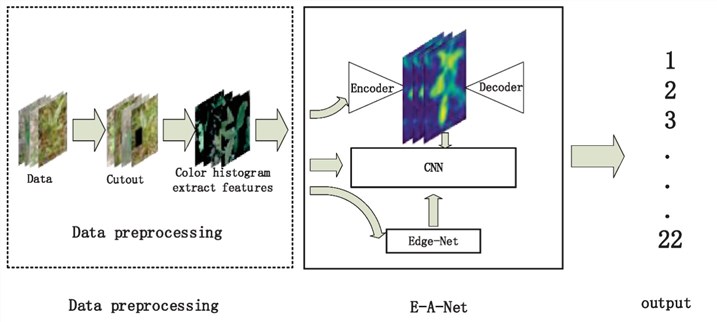Traditional methods of monitoring cattle and sheep grazing behavior rely on continuous, long-term manual observation records. The data obtained need to be sorted and manually counted to measure animal intake. This traditional method is time-consuming and inaccurate, affecting livestock's normal grazing behavior. With the development of unmanned aerial vehicle (UAV) systems, crop identification of RGB images is undergoing a paradigm shift from traditional image processing techniques to deep learning strategies due to successful breakthroughs in convolutional neural networks (CNN). Such algorithms allow accurate and efficient identification of forage species. They are the study of the relationship between plant species, quantity and growth, forage type, and ecological balance in the grazing behavior of cattle and sheep. Correct forage identification and classification is the key to perfect yield estimation for any agriculture-based country.
 Fig.1. Forage grasses identification process. (Han D, et al., 2022)
Fig.1. Forage grasses identification process. (Han D, et al., 2022)
Automatic identification of forage is the basis of the intelligent breeding of cattle and sheep. Specifically, it is a key step to study the relationship between the type and quantity of forage collected by cattle and sheep and their growth, cashmere fineness, milk quality, meat quality and flavor, and so on. As a leading global provider of forage testing services, Lifeasible is committed to developing intelligent forage identification systems to accurately identify forage species and provide ecologists with a basis for grassland evaluation, management, and precision feeding. We develop a customized process for intelligent forage identification.
(Ⅰ) First, we constructed a forage dataset. Various operations such as data enhancement, data equalization, and image segmentation are used to pre-process the collected data.
(Ⅱ) The segmented images are fed into the pre-trained encoder network, backbone feature extraction network, and edge extraction network simultaneously.
(Ⅲ) All features extracted by the autoencoder network and edge features extracted by the edge extraction network are input to the backbone feature extraction network for classification.
The unique feature of our customized solution is that we develop an edge feature extraction network that uses the rich edge information of herbaceous plants to assist in the extraction of the main features and improve classification accuracy. In addition, we use a pre-trained auto-encoder network to assist the primary feature extraction network for classification. Our intelligent forage identification systems include the following:
❖ Identification System of Forage-Related Animal Disorders
❖ Identification and Detection System of Forage Health
❖ Dynamic Monitoring System of Forage Yields
We currently offer popular machine learning and deep learning methods for forage identification.
Lifeasible has advanced intelligent forage identification systems to accurately count the number and species of forages and segment the forage images with complex backgrounds, which can effectively make the network more focused on the characteristics of forages. Our forage identification technology can be used for intelligent livestock projects in the future. For more information or to discuss in detail, please contact us.
Reference